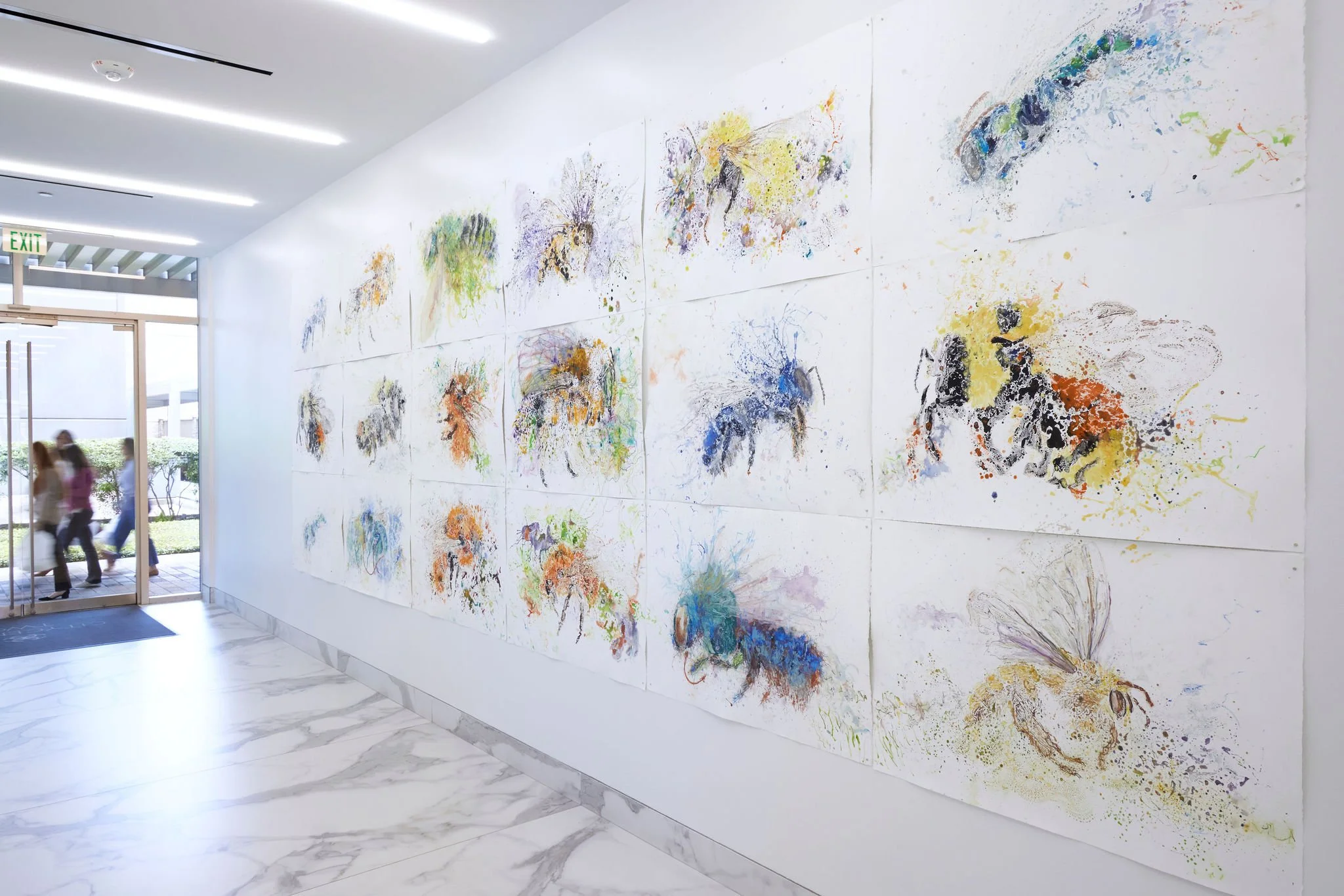264” X 90”
watercolor and oil
image by nikki evans
A rumbling in the distance is nature's way of alerting living creatures to their environment.
Rumblings is a work in progress, a monumental collection of fifty 30" x 44" watercolor monotypes that represent the 20,000 species of wild bees.
I meticulously manipulate watercolor ink and oil into a chaotic mix of infinitesimally small paint particles in these works. The energetic mark-making connects the oversized monotypes, reflecting the synergistic, aqueous effects of countless bee species drawn to pollinate plants, as well as their fragility due to the chemicals permeating residential gardens and industrial agriculture. By closely examining their remarkable ability to buzz pollinate with their unique pollen-adhering bodies, I zoom in and employ abstraction to portray the organized chaos of their movements. The installation of Rumblings inspires curiosity, prompting all viewers to pay attention and consider the unintended consequences of their actions in our interconnected micro-ecosystems. Rumblings is a resounding call to action - decrease pesticide usage, provide habitats for nesting, and plant native, indigenous plants that provide nectar for the bees, responsible for 70% of the food we eat.
Native bee populations can bounce back after honeybees move out.
Osmia Texana — the berry bee
30” X 44”
watercolor monotype
Osmia texana is as big as a housefly; they are a beautiful metallic blue looking through a macro lens. Their hairy abdomens are a pollen magnet. Over millions of years, their bodies have adapted perfectly with a variety of berry blossoms to collect pollen from blueberries, raspberries, melons, strawberries, and various vegetables.
Living for only 6-8 weeks, Osmia t. emerges in the spring. The females build their nest in reeds and visit 20,000 blossoms per day, leaving pollen as a food source for their offspring, and then die.
A honey bee only visits 50-1,000 blossoms a day.
When I have completed 50 bees I will decide on the placement of each piece and connect them with abstract botanical markings.
Bombus fernaldae
30” X 44”
watercolor monotype


